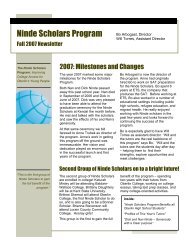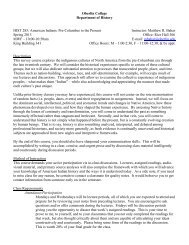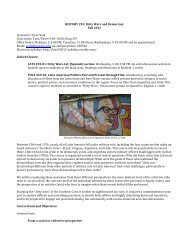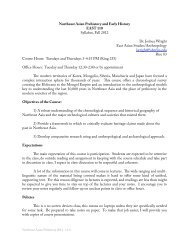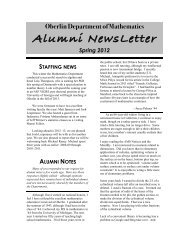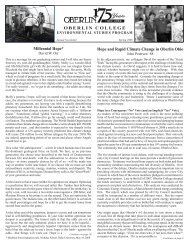Against the Current: Sita and Her Foils in - Bad Request
Against the Current: Sita and Her Foils in - Bad Request
Against the Current: Sita and Her Foils in - Bad Request
Create successful ePaper yourself
Turn your PDF publications into a flip-book with our unique Google optimized e-Paper software.
worry<strong>in</strong>g about what o<strong>the</strong>rs may th<strong>in</strong>k about her clo<strong>the</strong>s, she considers <strong>the</strong> practical<br />
function of cloth<strong>in</strong>g. For w<strong>and</strong>er<strong>in</strong>g through <strong>the</strong> rough l<strong>and</strong>s beyond <strong>the</strong> bounds of<br />
settled life, she requests an outfit that will protect her from thorns <strong>and</strong> keep her dry<br />
dur<strong>in</strong>g <strong>the</strong> ra<strong>in</strong>. The forest allows her to set aside sartorial concerns. <strong>Her</strong> fourth letter’s<br />
postscript conta<strong>in</strong>s what <strong>Sita</strong> has learned as a new bride, generaliz<strong>in</strong>g for o<strong>the</strong>rs:<br />
P.S. From now on, I don't have to th<strong>in</strong>k about <strong>the</strong> color of saris. Great<br />
peace has been established <strong>in</strong> my m<strong>in</strong>d. I have realized how excellent<br />
it would be if every woman went to live <strong>in</strong> <strong>the</strong> forest. The worries of<br />
life would be reduced by half.<br />
In four short pages of prose, Kumud<strong>in</strong>i has made <strong>Sita</strong> contemporary to her readers,<br />
imag<strong>in</strong><strong>in</strong>g her as experienc<strong>in</strong>g pressures that many new brides <strong>in</strong> <strong>the</strong> 1930s encountered<br />
Kumud<strong>in</strong>i depicts <strong>Sita</strong> at a time <strong>in</strong> her life about which little is recorded: her early<br />
days <strong>in</strong> her marital jo<strong>in</strong>t family. In addition, while <strong>the</strong> <strong>Sita</strong> of Valmiki <strong>and</strong> Tulsidas is<br />
depicted primarily as embody<strong>in</strong>g a static set of ideal characteristics, Kumud<strong>in</strong>i’s <strong>Sita</strong><br />
grows <strong>and</strong> matures; eventually she rejects be<strong>in</strong>g treated as a status symbol by her<br />
cloth<strong>in</strong>g. Fur<strong>the</strong>rmore, Kumud<strong>in</strong>i transforms a section of Ramkatha <strong>in</strong>to a domestic tale,<br />
while simultaneously address<strong>in</strong>g contemporary political issues about swadeshi goods.<br />
Thus, <strong>in</strong>volvement <strong>in</strong> <strong>Sita</strong>’s story becomes a way of th<strong>in</strong>k<strong>in</strong>g not only about ancient times<br />
but also <strong>the</strong> present.<br />
Ambai on <strong>Sita</strong>’s Middle Age<br />
Kumud<strong>in</strong>i’s story shares notable features with a more recent story by C.S.<br />
Lakshmi (1944-), a prize-w<strong>in</strong>n<strong>in</strong>g Tamil writer <strong>and</strong> admirer of Kumud<strong>in</strong>i’s work.<br />
Lakshmi, known to readers as “Ambai,” published her first novel <strong>in</strong> 1967 <strong>and</strong> has been<br />
8








